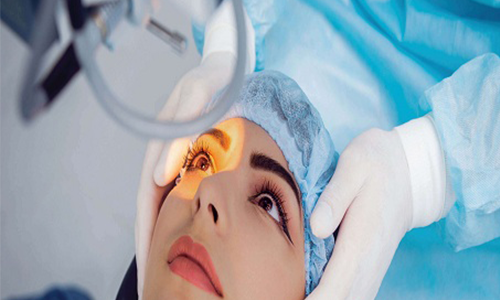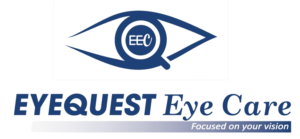
Magic of Laser Vision Correction
LASIK, short for "Laser-Assisted In Situ Keratomileusis," is a revolutionary eye surgery that has transformed the lives of countless individuals worldwide. This procedure corrects refractive errors like nearsightedness, farsightedness, and astigmatism.
Consultation
Creating a Flap
Healing and Recovery
Reshaping the Cornea
Results
Laser vision correction is a remarkable advancement in the field of ophthalmology that has transformed the lives of millions of people by improving their vision and reducing or eliminating the need for glasses or contact lenses. One of the most popular forms of laser vision correction is known as LASIK (Laser-Assisted In Situ Keratomileusis), and it works by reshaping the cornea, the clear front surface of the eye, to correct refractive vision problems such as nearsightedness (myopia), farsightedness (hyperopia), and astigmatism. Here are some key aspects of the magic of laser vision correction:
Precise Reshaping: LASIK and similar procedures use a highly focused laser beam to precisely reshape the cornea. By removing a microscopic amount of corneal tissue, the shape of the cornea is altered to allow light to be properly focused onto the retina, which improves vision.
Quick and Painless: Laser vision correction is typically quick and virtually painless. Most procedures are completed within minutes for each eye, and patients often experience minimal discomfort. Some numbing eye drops are used to ensure comfort during the procedure.
Rapid Results: Many patients notice an immediate improvement in their vision after laser vision correction. Some individuals may experience temporary fluctuations in vision, but the majority see a significant enhancement within a day or two.
Reduced Dependence on Glasses or Contacts: One of the primary benefits of laser vision correction is a significant reduction in dependence on eyeglasses or contact lenses. Many people achieve 20/20 vision or better, allowing them to engage in activities such as sports and swimming without the hindrance of glasses or contacts.
Enhanced Quality of Life: Improved vision through laser correction can lead to an enhanced quality of life. It can make daily activities like reading, driving, and watching TV more convenient and enjoyable.
Long-lasting Results: Laser vision correction typically provides long-lasting results. While vision can change over time due to aging or other factors, the effects of LASIK are often stable for many years. Some individuals may require enhancements or touch-up procedures later in life.
Safety and Advancements: Laser vision correction has an excellent safety record. Advancements in technology, such as wavefront-guided LASIK and femtosecond lasers, have made the procedures even more precise and safe.
Customization: Laser vision correction can be customized to the unique needs of each patient. Wavefront-guided and topography-guided LASIK, for example, can address not only common refractive errors but also subtle optical irregularities in the eye, providing more precise vision correction.
Eyequest Eye Care for Lasik/Smile

1. Experienced Surgeons
The center boasts a team of highly skilled and experienced surgeons who have performed numerous successful LASIK and SMILE surgeries.

2. Advanced Technology
EYEQUEST utilizes state-of-the-art technology and equipment, ensuring precise and safe procedures.

3. Personalized Care
Every patient is unique, and EYEQUEST understands this. They provide personalized care plans tailored to individual needs.

4. Post-Surgery Support
The support doesn't end with the surgery. EYEQUEST offers excellent post-surgery care to monitor progress.
LASIK and SMILE
EYEQUEST Eye Care is a renowned eye care center situated in the heart of Delhi/NCR. With a mission to provide crystal-clear vision to all its patients, EYEQUEST has established itself as a leader in eye care services. We specialize in advanced vision correction procedures like LASIK and SMILE.
LASIK (Laser-Assisted In Situ Keratomileusis) and SMILE (Small Incision Lenticule Extraction) are two popular types of refractive eye surgeries that aim to correct common vision problems, such as nearsightedness (myopia), farsightedness (hyperopia), and astigmatism. Both procedures are designed to improve vision by reshaping the cornea, but they differ in terms of technique and some aspects of the recovery process.

Life After LASIK/SMILE
Visual Freedom
Experience the world without the inconvenience of glasses or contacts.
Enhanced Lifestyle
Participate in sports, swim, and engage in daily activities without worrying about eyewear.
Improved Confidence
Many patients report increased self-confidence after LASIK/SMILE.
LASIK (Laser-Assisted In Situ Keratomileusis):
LASIK is one of the most well-known and widely performed refractive surgeries.
The procedure involves creating a thin flap on the cornea's surface using a microkeratome or a femtosecond laser. The flap is then lifted to access the underlying corneal tissue.
An excimer laser is used to reshape the cornea by removing tissue from the exposed stroma layer. This reshaping allows light to focus correctly on the retina.
After the cornea is reshaped, the flap is repositioned, and it typically adheres without the need for sutures.
LASIK usually results in rapid visual recovery, with many patients experiencing improved vision within hours to a few days.
It is often associated with minimal discomfort and a short recovery period.
SMILE (Small Incision Lenticule Extraction):
SMILE is a relatively newer refractive surgery technique that has gained popularity for its minimally invasive approach.
Unlike LASIK, SMILE does not involve creating a corneal flap. Instead, a femtosecond laser is used to create a small, lens-shaped lenticule within the cornea.
After the lenticule is created, a small incision is made on the cornea's surface, and the surgeon removes the lenticule through this incision.
The removal of the lenticule reshapes the cornea and corrects the refractive error.
SMILE is known for its preservation of corneal stability, as it leaves the majority of the corneal tissue intact.
Visual recovery with SMILE is usually slightly slower than LASIK, with some patients experiencing optimal results within a few weeks.
Both LASIK and SMILE have their advantages and considerations:
Advantages of LASIK:
Faster visual recovery for many patients.
Proven track record with a long history of successful outcomes.
Minimal discomfort during and after the procedure.
Advantages of SMILE:
Minimally invasive technique with a smaller incision.
Potential for better corneal stability as more tissue remains intact.
Reduced risk of certain LASIK-specific complications related to the corneal flap.
